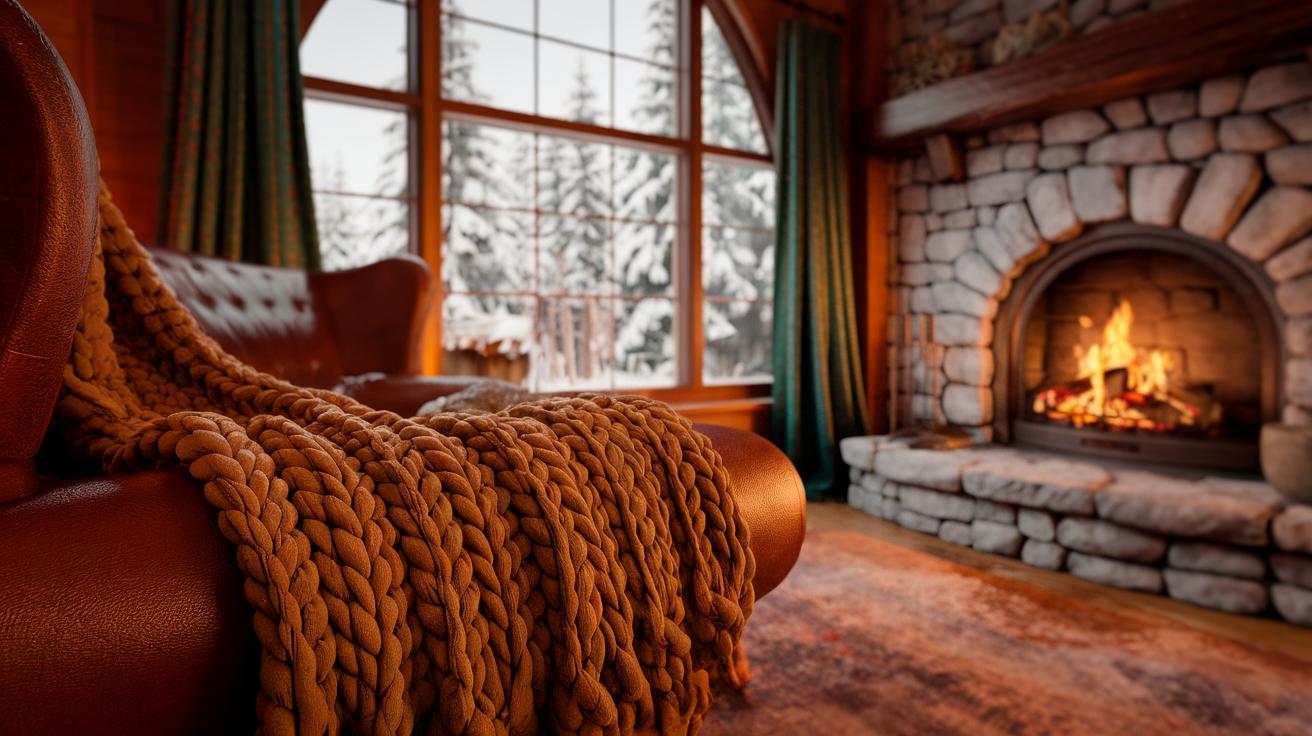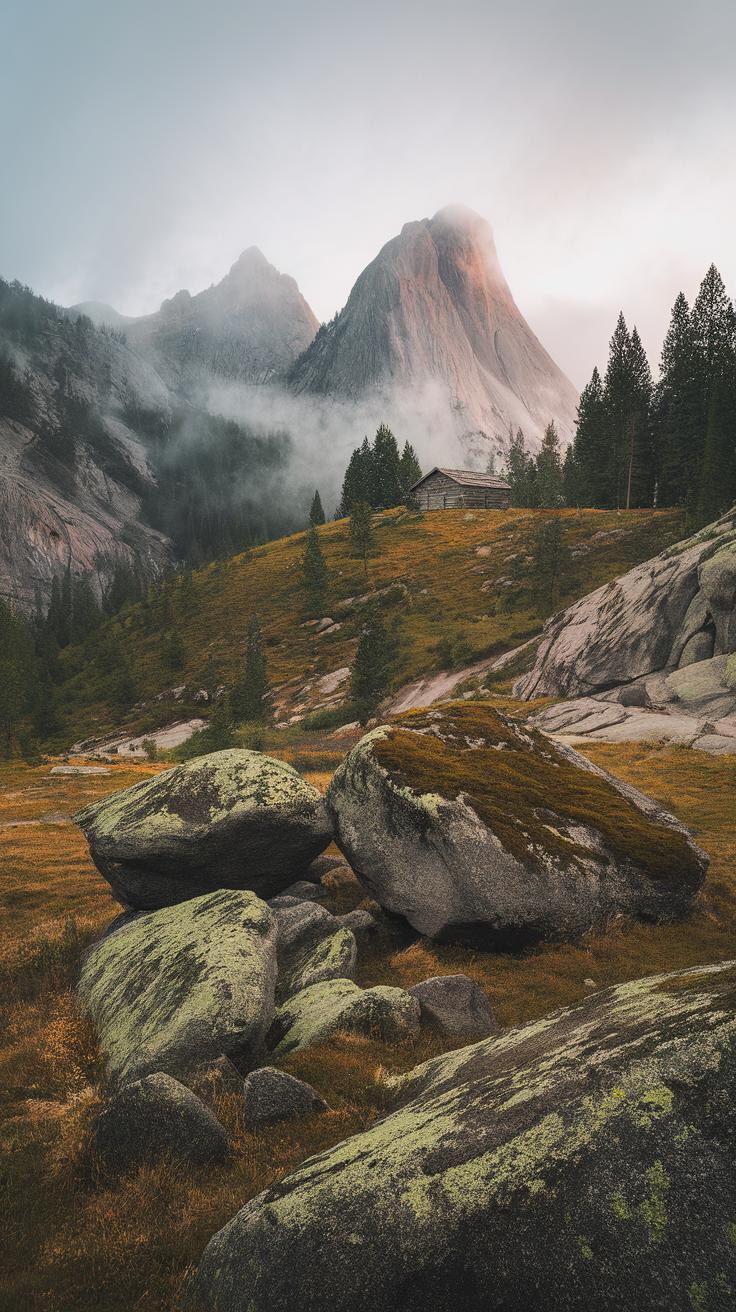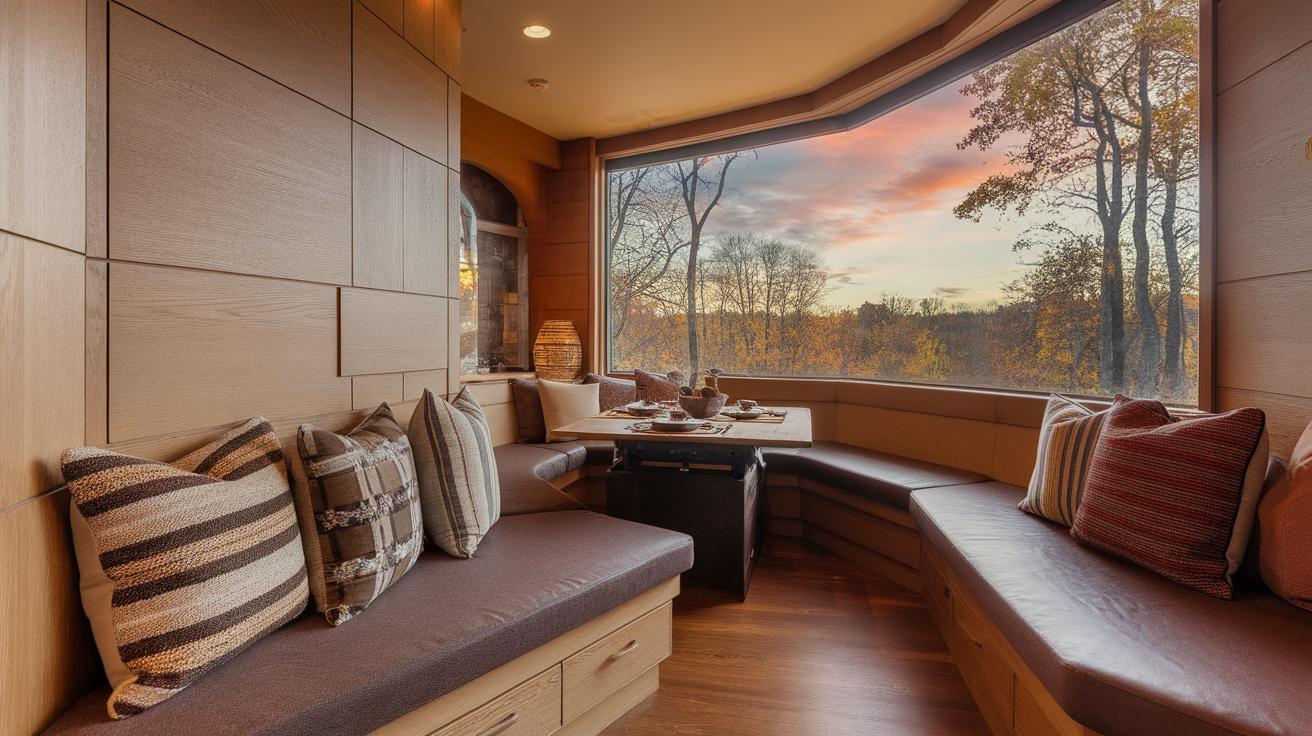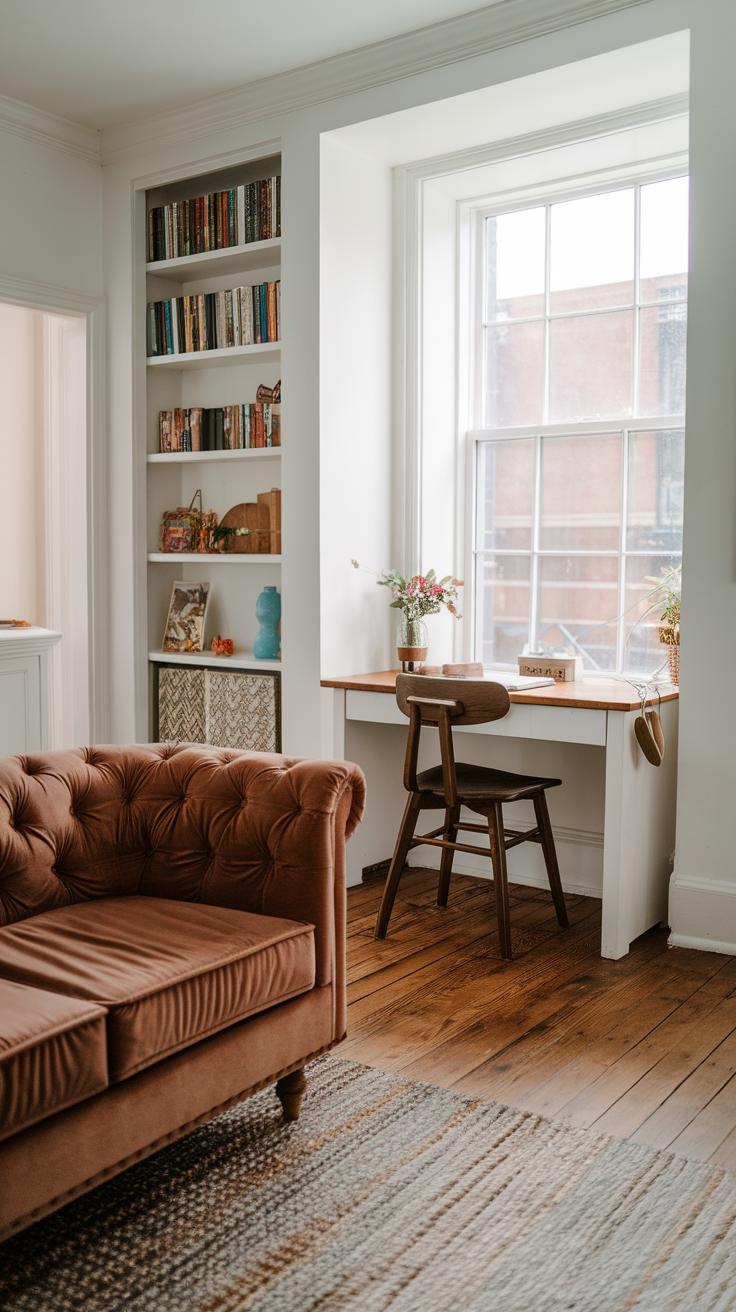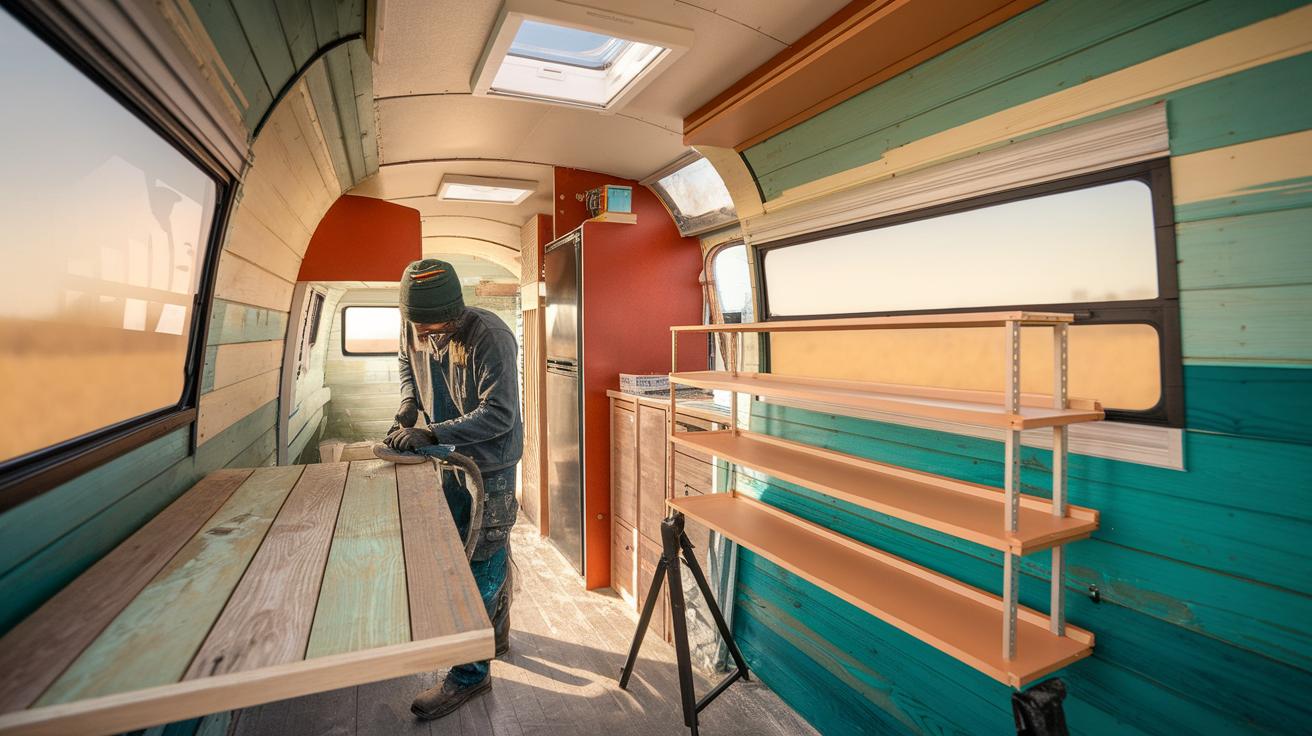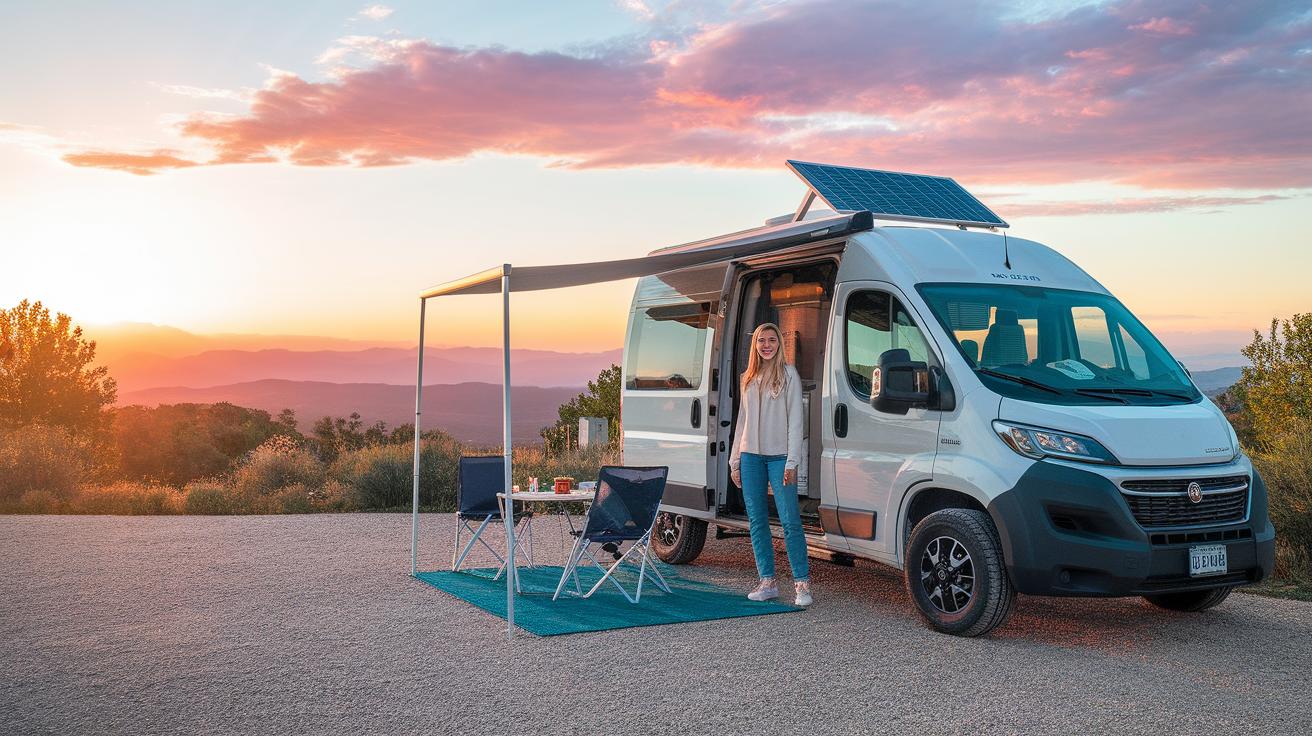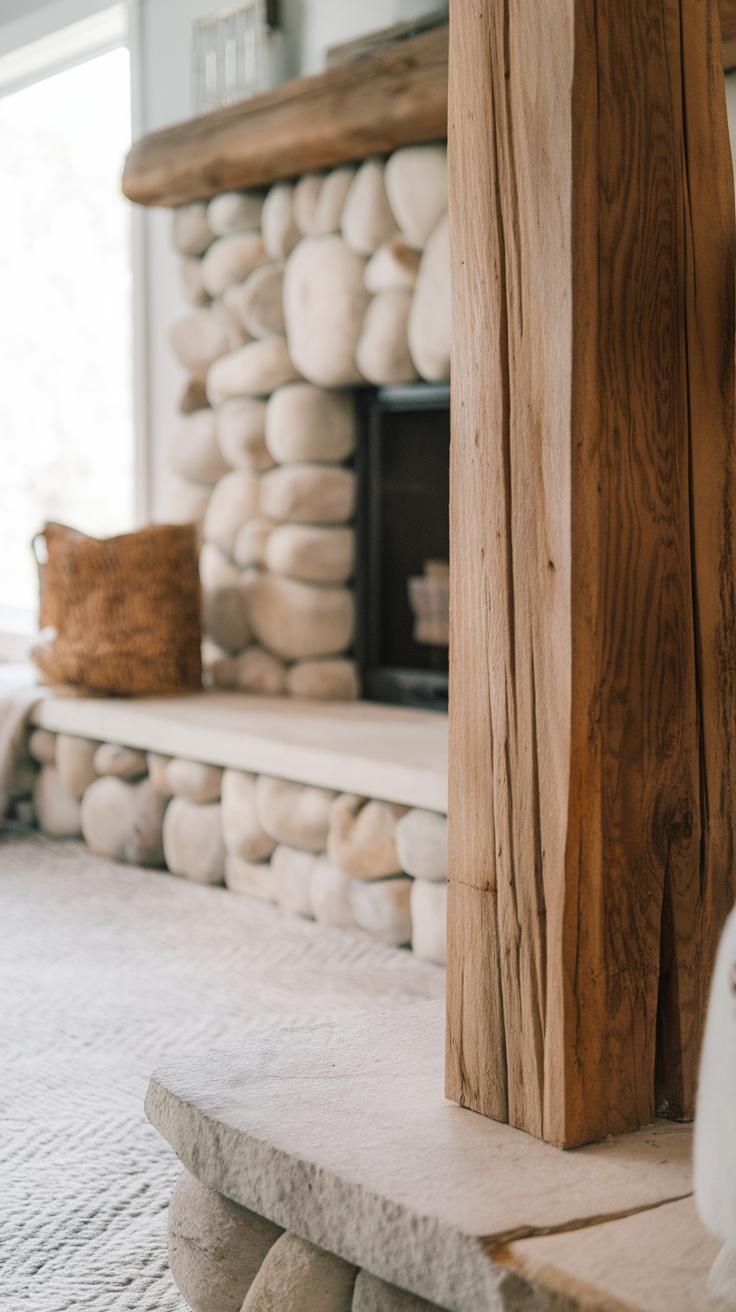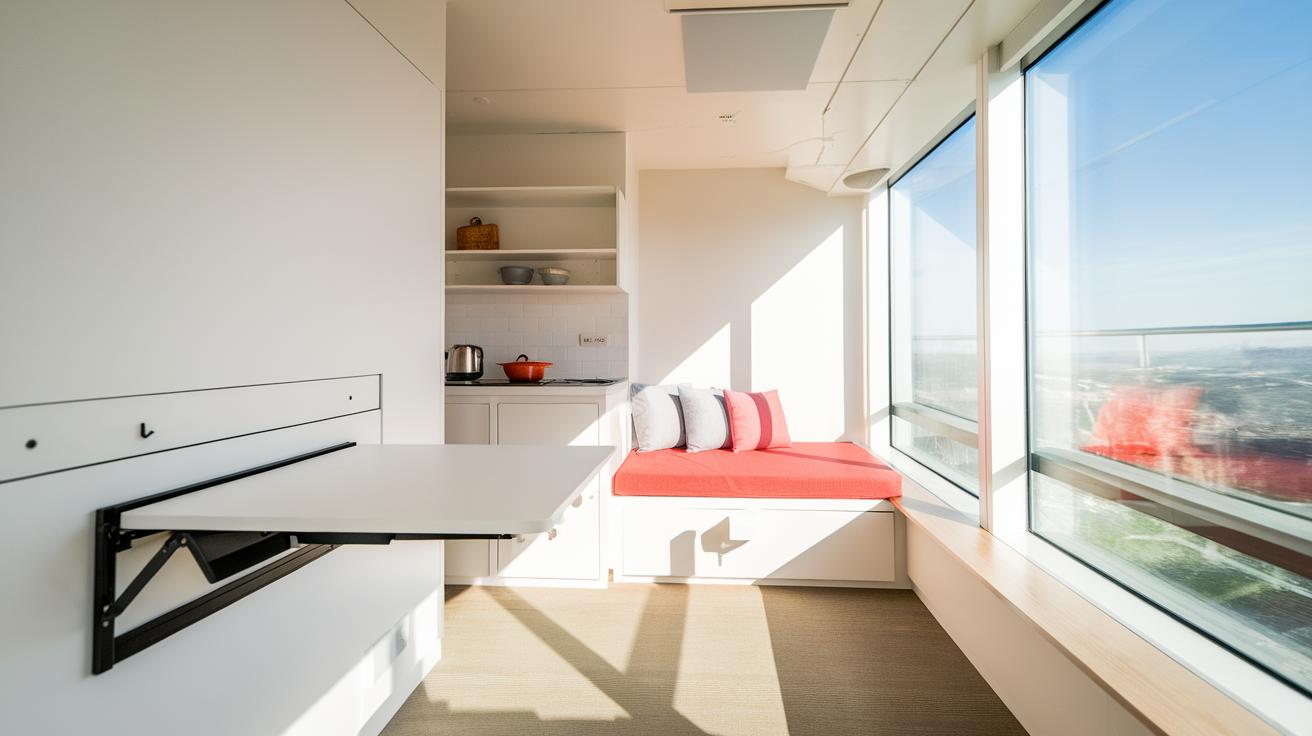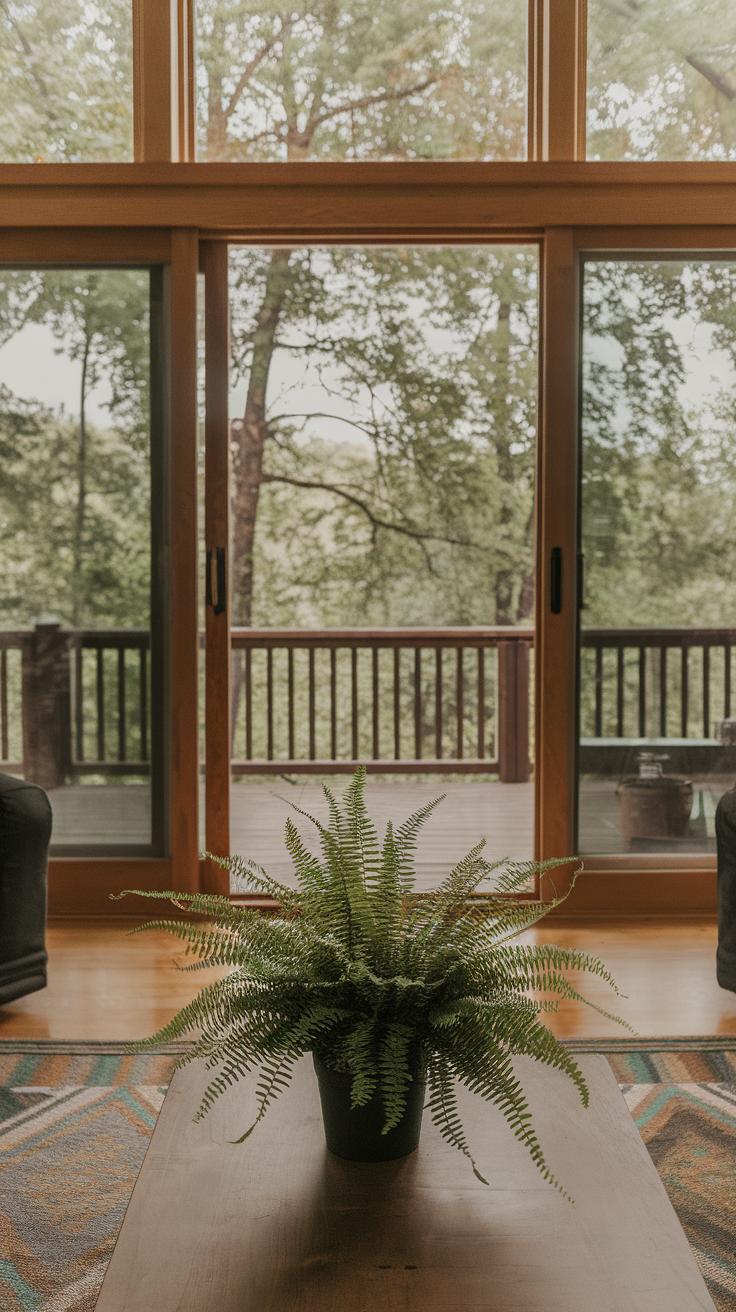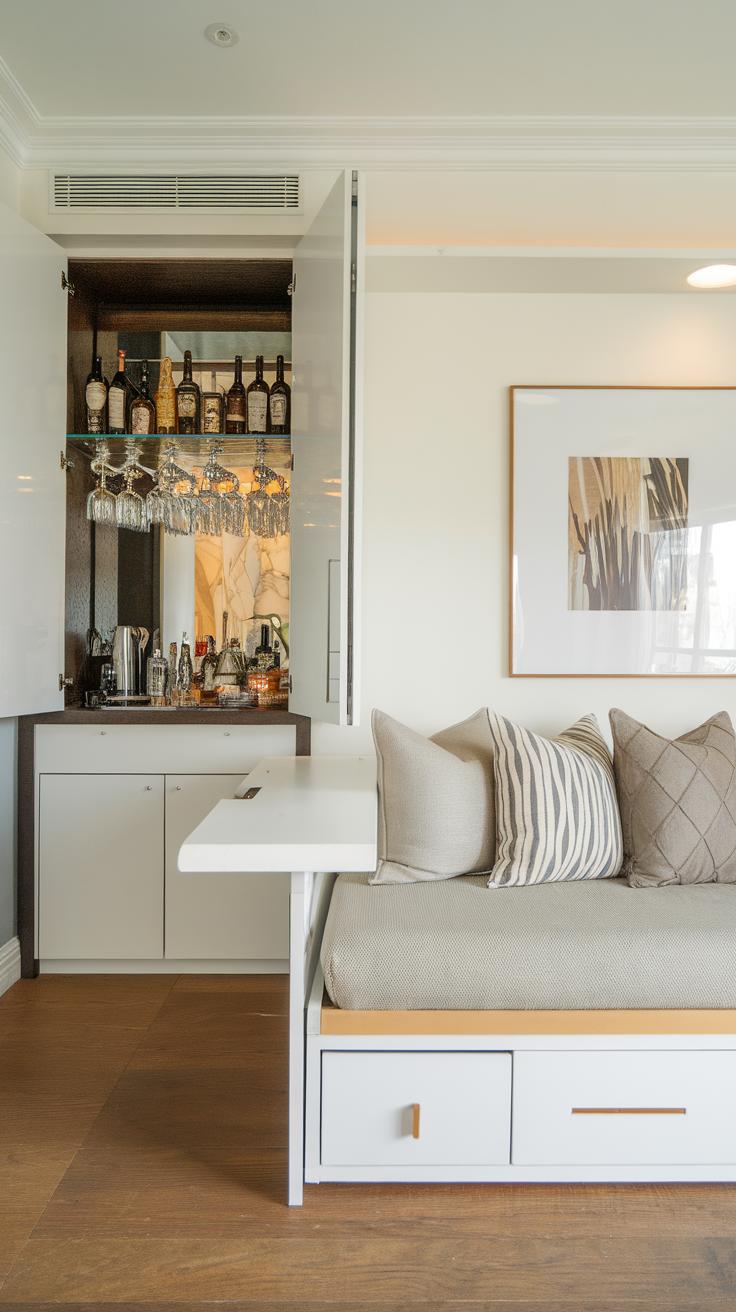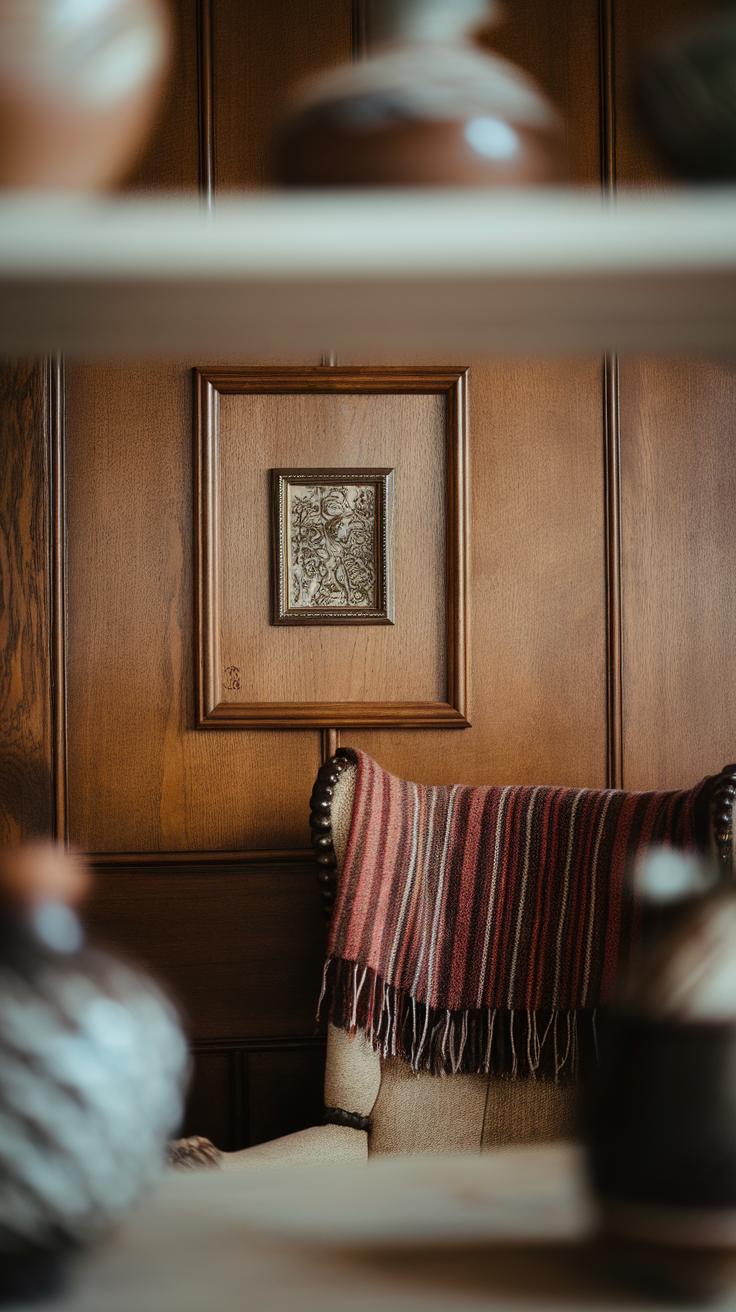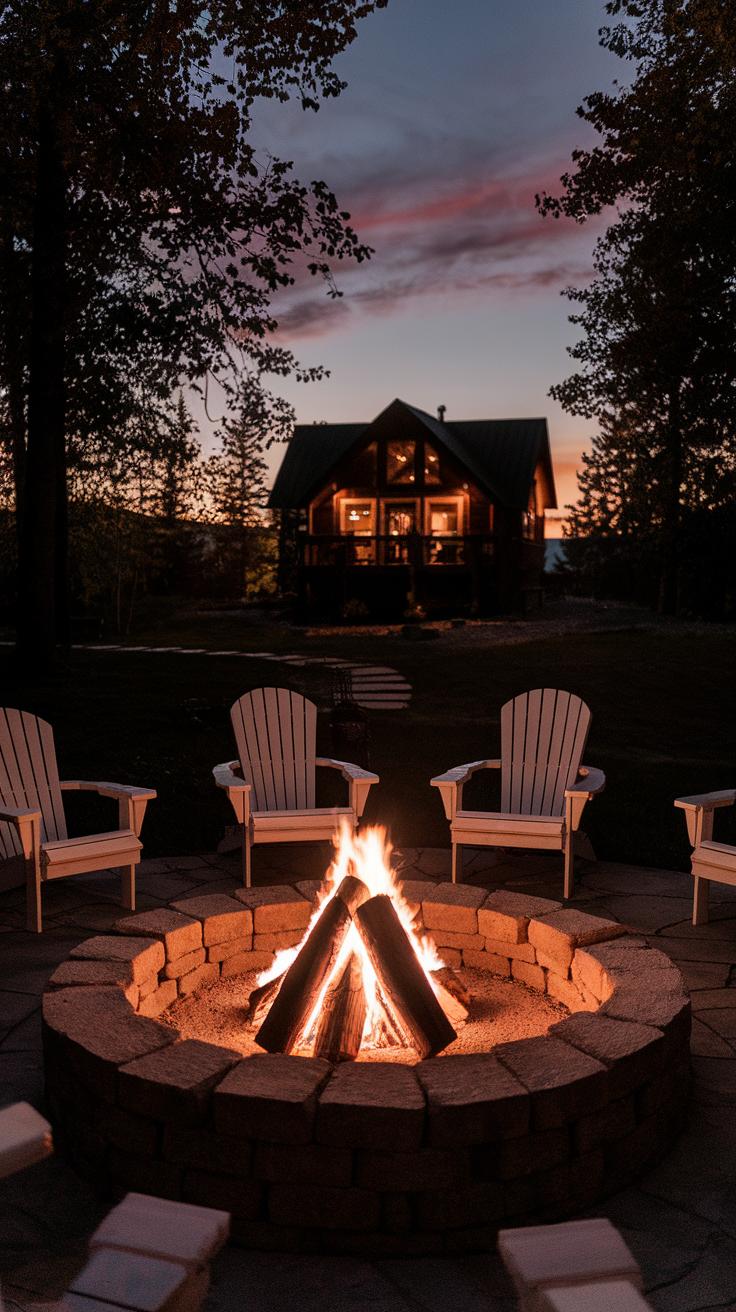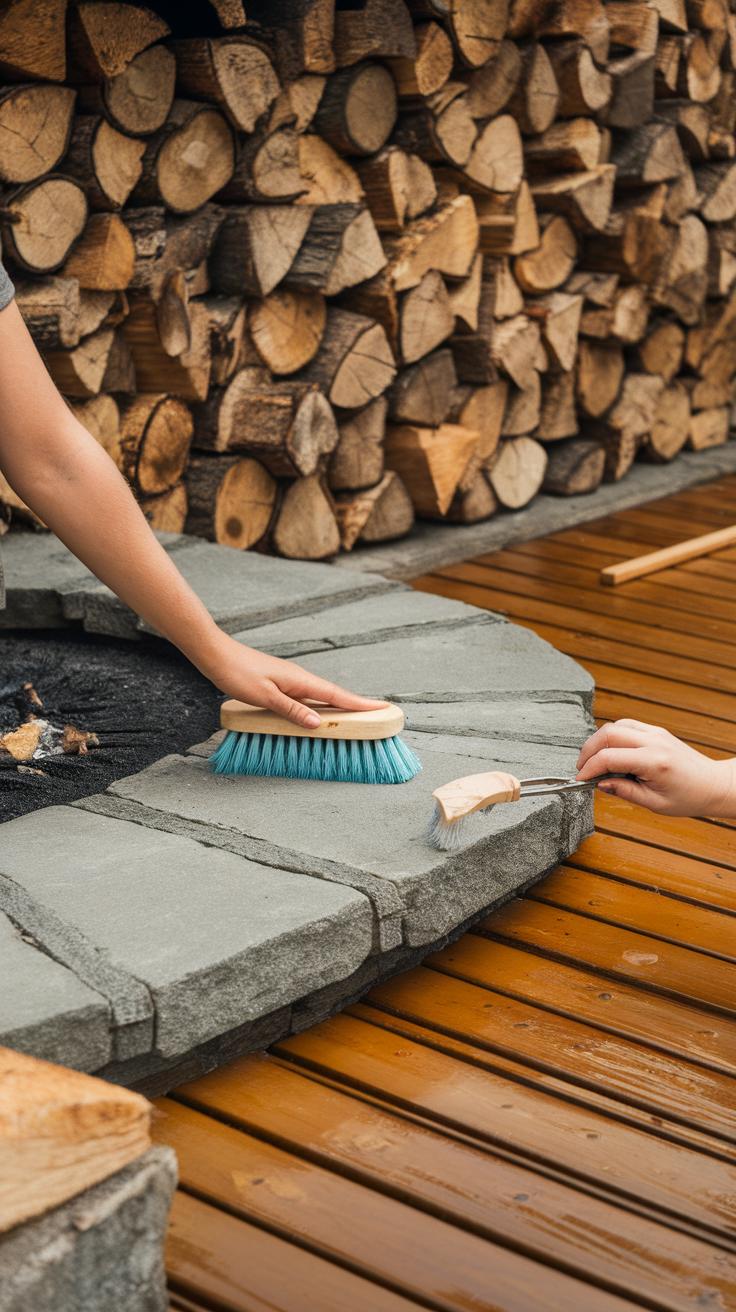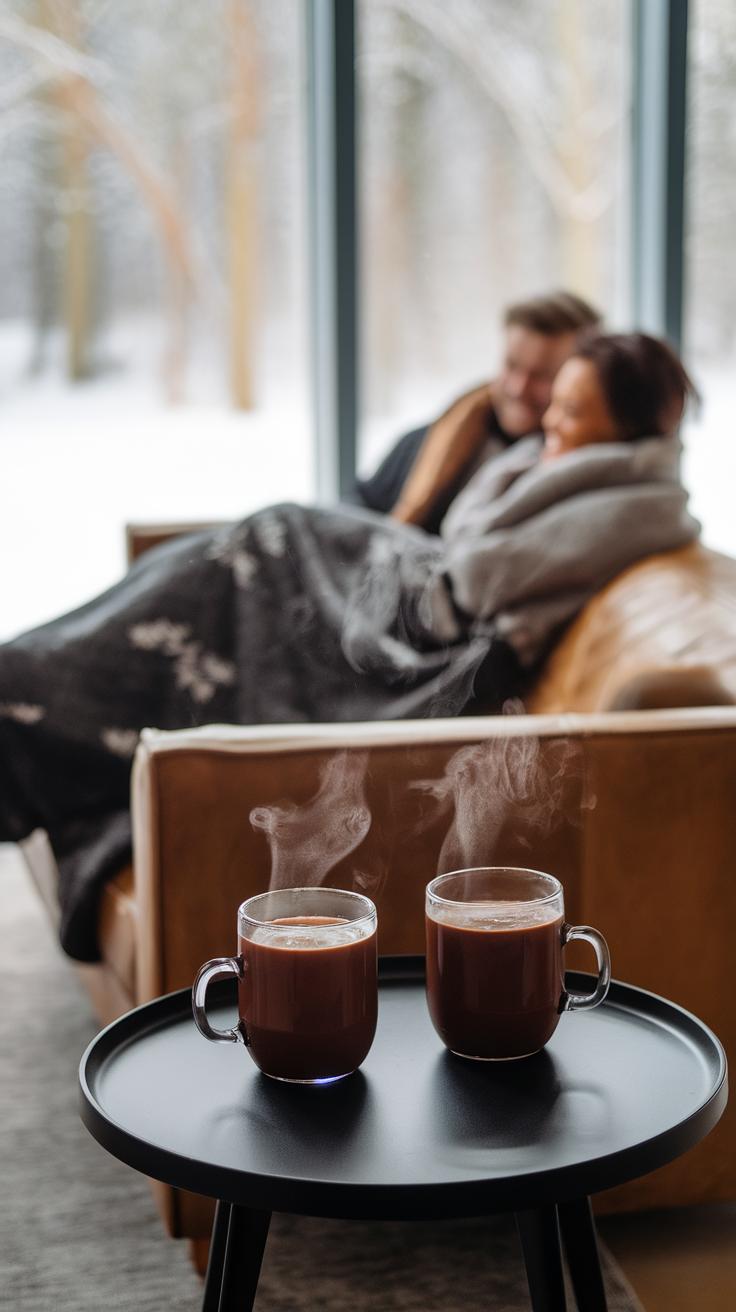Introduction
Finding a quiet and comfortable place to relax can be challenging in your busy life. A cozy cabin retreat offers a perfect escape from the daily rush. Planning your own cozy cabin allows you to tailor every detail to your liking, creating a personal haven. Building this retreat requires careful thought about location, design, and amenities. It also involves choosing materials and layouts that promote comfort and functionality. Creating a space that feels welcoming and warm is essential in making your cabin truly yours.
To start, you need to understand what makes a cabin cozy. This includes the right lighting, suitable furniture, and integration with nature. Considering how you will use the space helps to design it effectively. From relaxing reading corners to warming fireplaces, every element plays a part in developing that snug feeling. This article will guide you through important steps and considerations to help you build your ideal cabin retreat, ensuring it serves as your perfect escape whenever you need it.
Choosing the Right Location
Your cabin’s location shapes your entire retreat experience. Start by thinking about access. How easy is it to reach your cabin from main roads or airports? When you pick a spot, balance seclusion with practical needs like getting groceries, medical help, or fuel.
Look closely at your natural surroundings. Trees, water, and wildlife all add to your sense of peace and connection. Consider the type of landscape you enjoy waking up to every day. Imagine the sounds and sights that will greet you.
Privacy is more than just distance. Check how visible your space will be from neighbors or public paths. Look for natural barriers like hills or thick forests that keep your retreat feeling truly your own.
Ask yourself: Will this place recharge me? Can I handle the commute during tough weather? Reflect on how you want to blend quiet with convenience to create your perfect cozy cabin getaway.
Access and Convenience
You want your cabin to feel like a getaway, but not so remote that it becomes difficult to reach supplies or emergency aid. When choosing a location, test the roads leading there. Are they open year-round? Gravel or paved?
Consider how close you’ll be to medical centers and fire services. Even if you enjoy solitude, quick access to help adds peace of mind. Think about how you’ll manage visits during storms or snow—will your cabin still be reachable?
Access affects how often you’ll visit. A spot too far from essentials might discourage weekend trips or quick escapes. Make sure your location supports your lifestyle, whether that means weekly visits or extended stays.
Nature and Privacy
Natural elements influence the comfort you feel on your property. Trees, hills, and water bodies can reduce noise and create visual barriers that boost your privacy. Dense vegetation helps block unwanted views and muffles sounds.
Notice how breezes flow and sunlight changes during the day. A location with good exposure can improve your enjoyment and warmth, while shaded areas offer cool spots in summer.
Consider the neighbor distance as well. A cabin tucked away from neighbors provides quiet and freedom, but check for potential noise sources like nearby roads or hunting trails.
Ask yourself: Does this spot feel peaceful when I visit? Will I have the privacy I want without sacrificing comfort? Choosing natural privacy enhances your ability to truly unwind.
Designing for Comfort and Functionality
Every square foot in your cabin counts. Think about how each room will serve you. Start with essentials: a living area, kitchen, bathroom, and sleeping space. Arrange these so moving between them feels natural and easy. Avoid long hallways that waste space.
Open floor plans create a sense of roominess while keeping the cabin cozy. Combine kitchen, dining, and living areas to encourage connection. You might place the kitchen near the entrance to unload groceries quickly. How much time will you spend cooking versus relaxing? Let that guide your layout.
Consider flexible spaces. A guest room can double as a reading nook or workspace. Use folding or Murphy beds to save space. Place windows where they bring natural light without losing privacy. Think about flow and function together to make your cabin both comfortable and practical.
Efficient Use of Space
Clutter shrinks a space fast. Plan for storage early to keep your cabin neat. Built-in shelves use wall space without crowding floors. Under-bed storage is great for linens or gear. Hooks and racks near the door help organize coats and boots.
Separate areas by use but avoid tight rooms. Use furniture that fits the scale of your cabin, like small tables or stackable chairs. Open shelving in the kitchen reduces bulky cabinets and keeps essentials visible. Can you design your storage to make daily tasks easier?
Think vertical. Tall cabinets or loft spaces free floor room and create a larger feel. Clear counters and tidy rooms invite relaxation. Organizing well lets your cabin feel bigger and more inviting than its size suggests.
Creating Cozy Areas
Comfort starts with seating. Choose chairs and sofas with soft cushions and easy-to-clean fabrics. Arrange seats around a central point like a fireplace or window view to encourage conversation. Layer in throws and pillows for extra warmth.
Lighting shapes mood. Use multiple light sources: a mix of overhead lamps, table lamps, and wall sconces. Warm-toned bulbs make spaces inviting after sunset. Place reading lamps next to chairs or beds for practical comfort.
Fireplaces are natural warmth hubs. If a wood stove fits your style, position seating nearby but safe. Add a warm rug and small side tables to complete the area. How can you create spots that make you want to linger on chilly evenings?
Selecting Materials That Warm the Space
Choosing the right materials shapes how your cabin feels the moment you step inside. Warmth goes beyond temperature; it’s about the texture and look of surfaces around you. Wood and natural stone bring an organic vibe that makes a space feel lived-in and cozy. Wood’s grain and natural hues absorb and reflect light softly, creating a calming shelter from the outdoors. Stone adds solid, grounding accents that balance textures and anchor your design.
Soft textiles complete the warmth story. You want cushions that invite you to sink in, rugs that cushion your steps, and throws that add layers of comfort. Select fabrics with a touch, like wool or cotton, that stay breathable and cozy. These elements break hard edges and soften your cabin’s atmosphere. Can you picture your favorite quiet moment here, wrapped in a knit blanket near a wooden wall? That’s the warmth you build with thoughtful materials.
Wood and Natural Elements
Wood suits cabins because it connects your space to its surroundings. Pine, cedar, and oak offer diverse tones and textures that age beautifully over time. Their natural insulation helps maintain warmth, reducing cold drafts. Stone, often found in fireplaces or flooring, brings visual interest and resilience. It complements wood by adding a cooler surface that contrasts with the warmth of timber. Do you prefer exposed beams or wood-paneled walls? Both bring a rich, layered feel to your cabin’s design.
Soft Textiles and Finishes
Textiles bring softness where wood and stone are firm. Thick wool rugs trap chill from the floor while adding color and pattern. Cushions and blankets in natural fibers create inviting seating and resting spots. Pay attention to finishes on furniture and fixtures—matte paints and stains reduce glare and add tactile warmth. Think about how fabric and texture influence comfort. Are you drawn to cozy nooks filled with pillows or simple, minimal designs with just a few textured touches? Your choices will shape the mood and feel of your retreat.
Incorporating Energy Efficiency
You want your cozy cabin retreat to stay warm and inviting without high energy bills. Focusing on energy efficiency makes your cabin comfortable year-round and reduces your environmental footprint.
Smart insulation and weatherproofing techniques help trap heat inside while blocking cold air. Sealing cracks around windows and doors keeps drafts away. Using materials with high R-values slows heat loss through walls and roofs. You can also add storm windows or insulated curtains for extra protection during cold months.
Consider how your heating and lighting work together. Efficient systems cut energy use but keep the space cozy. Think about installing compact wood stoves, pellet stoves, or propane heaters as eco-friendly heat sources. For lighting, LED bulbs use less power and last longer while casting a warm glow.
Ask yourself: How can you design your cabin to stay comfortable with less energy? Choosing the right insulation, heating, and lighting options lets you enjoy your retreat without sacrificing warmth or charm.
Insulation and Weatherproofing
Keeping your cabin warm starts with strong insulation. Choose dense insulation materials that fit snugly between walls, floors, and ceilings. Spray foam and rigid foam boards block air leaks better than fiberglass batts. Adding weatherstripping around doors and windows stops cold drafts.
Seal any gaps where pipes or wires enter your cabin. These small openings let cold air slip in and heat escape. You might want to use caulk or expanding foam for those tricky spots. Check the roof for any cracks or damaged shingles and fix them to prevent heat loss.
Consider insulating your cabin’s foundation and floor too. Cold air often sneaks in through unprotected floorboards. A vapor barrier beneath floors slows moisture and improves comfort. What areas in your cabin need extra sealing to keep heat inside?
Efficient Heating and Lighting
Choose heating systems designed for small spaces and low energy use. A pellet stove burns compressed wood pellets cleanly. You load it once, and it stays warm for hours. Propane heaters with good venting add quick, efficient heat without electricity.
If you can use electricity, a mini-split heat pump offers heat and cooling with minimal power. It adjusts output to match your needs, so you don’t waste energy heating an empty cabin.
LED lights help maintain warmth by producing less heat than incandescent bulbs. They use less power and last longer, meaning fewer replacements. Select warm-white LED bulbs to keep the cozy feel. Solar-powered outdoor lights add safety without new wiring or extra energy costs.
Which heating and lighting setups will fit your cabin space and lifestyle? Your choices will shape how comfortable and efficient your retreat feels every day.
Bringing the Outdoors In
Creating a strong link between your cabin’s interior and the natural world around it makes the space feel calmer and more inviting. Start by positioning your main living areas where you can see trees, lakes, or hills through windows. This connection to nature helps quiet the mind and lowers stress levels.
Using natural materials like wood, stone, and leather inside also echoes the outdoors. These textures feel familiar and create a sense of harmony with the landscape outside. Choose furniture and finishes that reflect the cabin’s surroundings without overpowering them.
Consider the flow between indoor and outdoor spaces, such as a sliding door that opens onto a porch or deck. This encourages fresh air to enter and provides easy access to nature. How often do you let the outside world into your living space to recharge your sense of calm?
Large Windows and Views
Natural light brightens your cabin and supports well-being. Large windows bring in daylight, which reduces the need for electric lighting during the day. This not only saves energy but also improves your mood and focus.
Position windows to capture the best views. Watching wildlife or the changing seasons from inside your cabin creates a sense of connection to the outdoors. It can make quiet moments more meaningful and turn your retreat into a place for genuine relaxation.
Think about window placement carefully. South-facing windows usually provide the most sunlight, while east-facing ones offer soft morning light. Windows near seating areas give you a perfect spot to enjoy nature without stepping outside. How can you frame your favorite view to become part of daily cabin life?
Indoor Plants and Natural Decor
Bringing plants inside adds life and color to your cabin. Choose species that thrive indoors with less light, such as ferns, snake plants, or pothos. These green touches connect your living space with the natural world outside.
Natural decor elements like wooden bowls, stone vases, and woven baskets create a rustic feel without cluttering the room. Display pinecones, dried flowers, or driftwood collected during your outdoor adventures to personalize your space and remind you of your surroundings.
Grouping plants near windows or in corners where sunlight reaches works well. You might even create a small herb garden on a windowsill for fresh scents and practical use. How can natural elements help you feel more grounded during your time at the cabin?
Creating MultiUse Spaces
Your cabin should work for every part of your day. Designing spaces that switch between sleeping, working, and relaxing lets you get the most from limited square footage. Think about creating zones that transform easily based on your needs. For example, a loft area might serve as a quiet reading nook by day and a guest bedroom by night.
Look for spots where you can add a desk and seating without crowding the room. A corner with good light could become your workspace. When it’s time to unwind, a comfy chair or a fold-out couch can offer a welcoming place to relax or watch the fire.
Ask yourself how you want to use the cabin during different parts of the day. Would you like to eat, work, and nap in the same room? Planning now saves time and hassle later. Flexibility makes your retreat feel bigger and more inviting.
Flexible Furniture
Choose furniture that bends to your lifestyle. A table with adjustable height can be your dining surface or desk. A sofa bed gives you seating by day and an extra bed by night. Stackable chairs save space when not in use.
Look for pieces with built-in storage to keep the cabin clutter-free. Beds with drawers underneath or ottomans with hidden compartments work well. You might find foldable desks or wall-mounted workstations that tuck away easily.
Think about how often you’ll switch between activities. Would a murphy bed make a better fit than a traditional bed? Could a bench double as a workspace? These options help you save room while keeping your cabin comfy and useful.
Zoned Areas
Separate your cabin into clear zones for work, rest, and leisure, even in a small space. Use rugs or different flooring to show the boundaries. Curtains, screens, or low bookcases can divide spaces without blocking light.
Place your desk near a window for fresh air and natural light. Keep your sleeping area cozy by using softer lighting and warm colors. A corner with cushions or a small sofa invites you to relax after a day outdoors.
Do you feel more productive with a physical barrier between work and play? Creating clear zones helps your mind shift focus, even if the areas are close. Think about everyday habits and how space can support them.
Adding Personal Touches
Your cabin should feel like your own quiet place away from everything. Start by thinking about items that make you smile and bring comfort. This might be cozy blankets you picked up on a trip or a favorite reading lamp that creates a warm glow. Adding these pieces lets your personality show and makes the cabin welcoming.
Mix in objects you use daily or that tell a story about who you are. Maybe you enjoy knitting—display your yarn and needles where they catch your eye. If you love coffee, set up a small cozy corner with your favorite mugs and a French press. These small details make the space truly yours.
How can you mix comfort with practicality? Think about how your hobbies and routines fit into the cabin’s flow. When you bring meaningful items into your retreat, your space becomes more relaxing and inviting, enhancing your getaway experience.
Decor and Artwork
Adding art and decor offers a simple way to give your cabin color and character. Choose paintings, prints, or photos that resonate with your tastes. This could mean landscapes from places you’ve visited or abstract pieces that catch your eye.
Decorative pillows and rugs can quickly change the room’s mood. Pick colors and patterns that make you feel calm or energized, depending on your mood. Lighting fixtures also add style while setting the atmosphere—think soft bulbs and rustic designs that fit your cabin’s theme.
Ask yourself what colors or styles make you feel at home. Is there local art or crafts that reflect the area where your cabin sits? Bringing in pieces like these connects your cabin to its surroundings and makes it feel more special.
Memorabilia and Collections
Personal keepsakes give a cabin life beyond its walls. Display items from your travels, family heirlooms, or collections you’ve built over time. These pieces spark memories and create a unique atmosphere that guests will notice and appreciate.
Use shelves, shadow boxes, or clear glass jars to show your collections neatly. For example, arrange seashells from past beach trips or small rocks gathered from hikes. This turns ordinary objects into meaningful decor.
How can your memorabilia inspire conversation or comfort? When your cabin shares your story, it feels warmer and more inviting. Sharing these details gives your retreat a personality that matches your own.
Planning for Outdoor Living
Creating outdoor spaces that feel inviting can extend your cozy cabin retreat beyond the walls. Think about how you want to use the area around your cabin. Do you picture quiet mornings with a cup of coffee or lively dinners under the stars? Your answers will shape the design of your outdoor space.
Consider spots that catch the sun or offer shade at prime times of the day. Adding comfortable seating and simple lighting can turn these areas into places you want to spend time in. Small touches like a fire pit or a hammock can make a big difference in how much you enjoy your surroundings.
Ask yourself what will make these outdoor areas feel like part of your escape. What natural features do you want to highlight? Planning with your daily routines and the local environment in mind ensures that your outdoor living spaces will truly enhance your cabin getaway.
Patios and Decks
Patios and decks often become the heart of outdoor living at a cabin. Start with good seating. Chairs with cushions or a sturdy bench can welcome you and your guests after a day outdoors. Choose materials that hold up to weather but still feel comfortable.
Dining outside can change your experience. A simple table and chairs set lets you enjoy meals with fresh air and a view. Adding an umbrella or pergola creates shade without closing you off from the environment.
Think about lighting options that make your patio usable after dark. Solar-powered lanterns or string lights add warmth and keep the space functional. How could you arrange furniture to encourage conversation or take advantage of a scenic outlook? Planning your patios and decks around your lifestyle helps solidify your cozy retreat’s outdoor charm.
Gardens and Paths
Gardens and paths invite you to connect with the natural world around your cabin. You might plant native flowers or easy-to-care-for shrubs that attract birds and butterflies. These green touches create small pockets of peace outside your door.
Simple walking paths encourage exploration and add structure to your outdoor space. Gravel, wood chips, or flagstones work well and blend with natural settings. Paths can lead to special spots like a bench, fire pit, or a quiet nook for reading.
What local plants thrive in your area? Can you design a route that changes with the seasons? Thoughtful gardens and paths let you enjoy the outdoors in clear, relaxing ways. They help make your cabin feel more like a place you want to return to time and again.
Maintenance and Upkeep
Keeping your cozy cabin in good shape requires steady attention. Regular maintenance helps avoid costly repairs and keeps your retreat welcoming year-round. Check for signs of wear in the foundation, roof, and exterior walls at least twice a year. Look closely for cracks, leaks, or loose boards that could let in moisture or pests. Your plumbing and electrical systems deserve careful inspection too. Are pipes well insulated? Do outlets and lights work safely? Simple checks catch problems early.
Ask yourself: Have you set a schedule to review these parts? Tracking maintenance boosts your cabin’s lifespan and saves stress later. Whether you handle fixes yourself or hire help, consistent upkeep protects your investment and keeps your getaway comfortable and safe.
Regular Checks
Frequent inspections help spot issues before they grow. Check your cabin’s roof for damaged shingles or debris after storms. Inspect the chimney and flue for blockages if you use a fireplace. Walls and windows need attention to seals and caulking to guard against drafts. Test smoke detectors and carbon monoxide alarms monthly to ensure safety. Examine doors and locks to prevent security risks.
Consider setting reminders for these tasks. Walking your property regularly creates a routine and sharpens your eye for details. What small damage could turn into a big problem? Early recognition keeps your cabin cozy and reduces repair costs.
Seasonal Tasks
Each season demands unique care. In spring, clear gutters and downspouts to prevent water damage. Check the foundation for cracks that ice could worsen. Summer is a good time for exterior painting or staining to shield wood. Remove any vegetation growing too close to the building to reduce fire hazards.
Before winter, drain outdoor pipes and insulate exposed plumbing. Clean out fireplaces and service heating systems for safety and efficiency. Fall chores include raking leaves and trimming branches that could cause trouble during storms. How will your seasonal checklist ensure the cabin stays ready for your next visit?
Following these habits keeps your cabin in prime condition and your retreat experience hassle-free.
Enjoying and Sharing Your Retreat
Making Time for Yourself
Set clear boundaries to protect your cabin time from daily distractions. Decide in advance when to visit and block those days off on your calendar. Use this time to disconnect from work and technology. Try simple activities like reading a book, walking nearby trails, or sitting quietly by the fire. These habits can help quiet your mind and restore your energy. You might wonder, how often should you make this a priority? Even short weekend stays can recharge your spirit. The key lies in treating your cabin visits as essential—not optional. By doing so, you give yourself the chance to relax deeply and return to your routine with renewed focus.
Inviting Friends and Family
Sharing your cabin creates moments that last longer than the trip itself. Inviting loved ones connects you through shared meals, games, or exploring the outdoors together. Those experiences build stronger relationships and create traditions your group looks forward to repeating. Consider hosting a small weekend gathering where everyone helps with meals or outdoor projects. This teamwork can turn your retreat into a place for laughter and bonding. Have you thought about how sharing your cabin might bring joy not just to you, but also to others who need a break? Opening your retreat can turn a personal haven into a welcoming place for memories and meaningful connection.
Conclusions
When you create your cozy cabin retreat, every choice matters. Selecting the right location, materials, and design greatly impacts your comfort and enjoyment. Incorporating warm lighting and smart storage solutions allows your cabin to remain welcoming and tidy. Choosing calming colors and natural elements connects the indoor space with the outdoors, enhancing relaxation. Remember that your cabin should fit your lifestyle and needs to make the experience fulfilling. Applying the suggestions discussed helps you build a cozy, practical, and inviting place.
Enjoy this project as an opportunity to reflect on what comfort means to you. Your retreat will serve as a stress-free zone where you can unwind completely. Taking time to plan carefully ensures your cabin becomes a valuable and cherished space. Let your retreat inspire peaceful moments and rewarding breaks. With thoughtful design and attention to detail, your ultimate cozy cabin will become the dream getaway you look forward to, time and time again.


